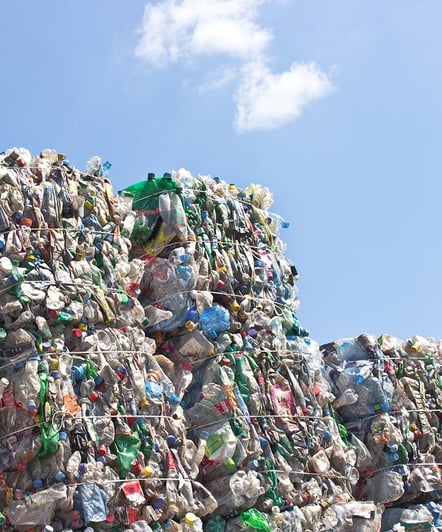By the time you finish reading this paragraph, people around the world will buy more than one million plastic bottles and use at least two million plastic bags. Yet even as more people aim to avoid these types of single-use plastics, upwards of 300 million tons of plastic is still produced each year to make everything from fabrics and coffee cups to receipt paper and food containers.
Only about 9 percent of this plastic gets recycled — so once discarded, most of it winds up in landfills and waterways, where it wreaks havoc on the environment. But research points to another crisis hiding in plain sight: plastic’s threat to human health.

How does plastic pollution harm human health?
Plastic is so universal in our lives today because the material easily adapts to serve almost any purpose. An individual plastic item can contain a wide variety of chemicals and additives to make it more durable, flexible, fire-resistant, antimicrobial, or simply more colorful.
 |
A recent report found that these chemicals don’t just stay put — they can seep into whatever a plastic item comes in contact with, whether that’s food, liquids, or your skin. This cocktail of chemicals is linked with greater rates of chronic diseases like cancer and diabetes. Still, the report says that they’re especially taxing on our body’s endocrine system. |
That’s because there are at least 144 hazardous chemicals used in plastics known as endocrine disrupting chemicals (EDCs,) according to the International Pollutants Elimination Network (IPEN) and the Endocrine Society. These materials can work to mimic or block hormones, interfering with healthy bodily functions ranging from breathing to growth, immunity, and reproduction.
Scientists believe that ECDs get passed down from mother to child as well. While research into these impacts continues, current animal studies show that EDCs "cause DNA changes that have repercussions across multiple generations."
The big problem of microplastic
Other studies show that people ingest plastic, too. Scientists have found tiny bits of plastic — known as microplastics — in many major organs in the human body, including the liver, lungs, spleen, and kidneys.
Microplastics originate from many sources. They can leach out of fabric containing plastic fibers, cigarette butts, personal care items, or form when larger plastic products gradually break down over time.
But because plastic never completely decomposes — it just gets tinier and tinier — these microplastics accumulate in our water, air, soil, and even make their way into the food chain. A study out of the University in Australia estimates that, on average, human all consume a credit card’s weight of microplastics every week.
How to reduce the health risks of plastic
While you can’t completely avoid plastic chemicals or microplastics, there are a few ways you can limit your exposure, reducing potential health risks and the scale of the problem for future generations.
- Don't heat plastic
The chemicals in plastic leach out faster and to a greater degree when exposed to heat, according to Harvard Medical School. That means you should avoid putting plastic containers in the microwave or dishwasher — or better yet, keep your kitchen plastic-free with items made from natural materials.
- Eat fresh
Limit the amount of plastic-wrapped items you buy at the grocery store, like processed or prepared foods. Even canned goods have a plastic lining that can seep into the food, especially if stored in a warmer area.
- Read labels
Not all plastic is made equally — and some types contain more dangerous additives and chemicals than others. Doctors recommend avoiding plastics labeled:
- Code number 3, or containing phthalates, possible EDCs
- Code number 6, or containing styrene, a potential carcinogen
- Code number 7, or containing bisphenols, also possible EDCs
- Choose plastic alternatives
Additives like phthalates and bisphenols are sometimes called “the everywhere chemicals,” which means they’re often tough to avoid. But you can limit your exposure to plastic altogether by opting for items made with natural materials that are safe and won’t produce more microplastic.
At Footprint, we aim to make it even easier to break up with plastic for good. Our plant-based fiber products are high-quality alternatives to everyday plastic items that stand to threaten human health and the environment alike. Check out our available items or get in touch to learn more about how you can be part of the solution.
